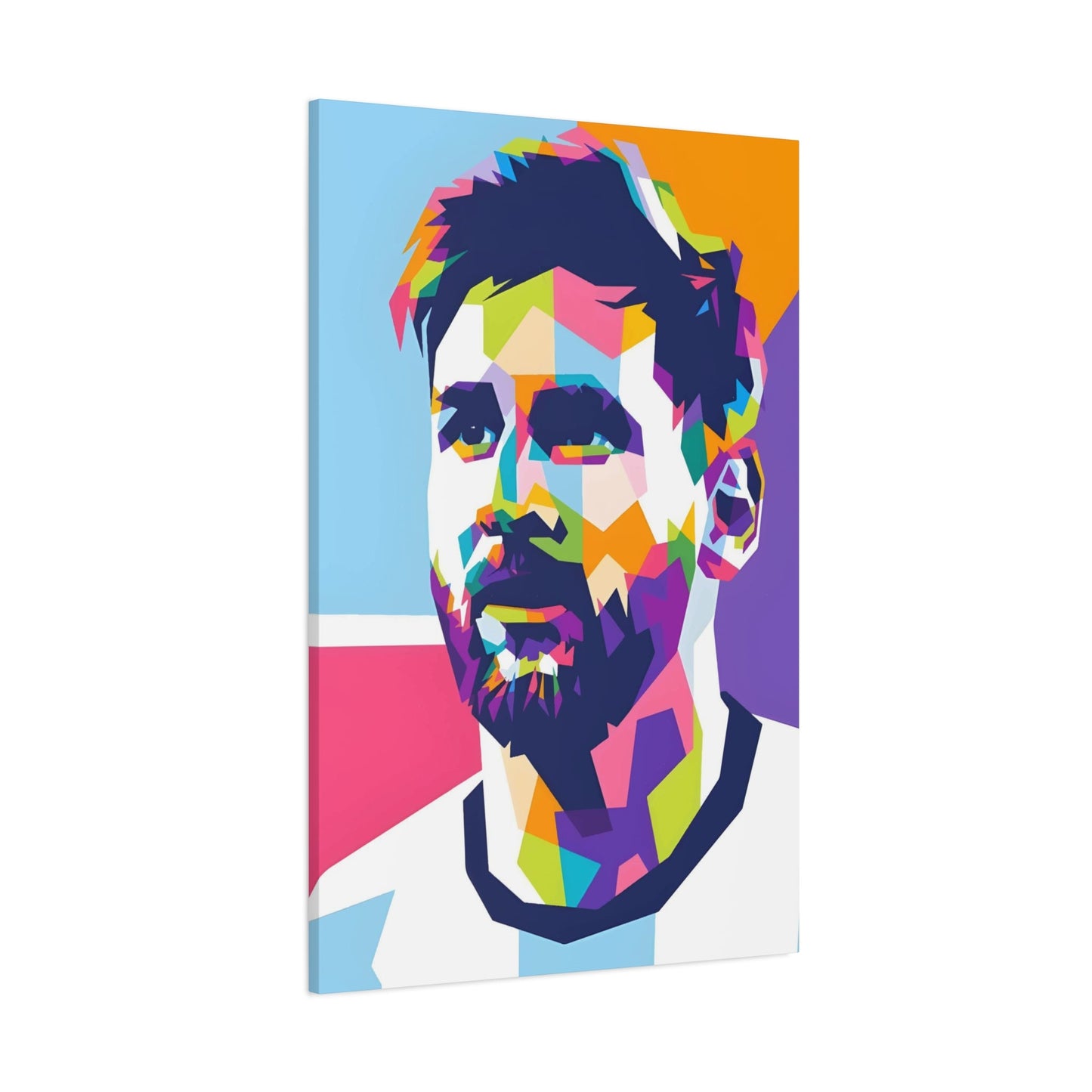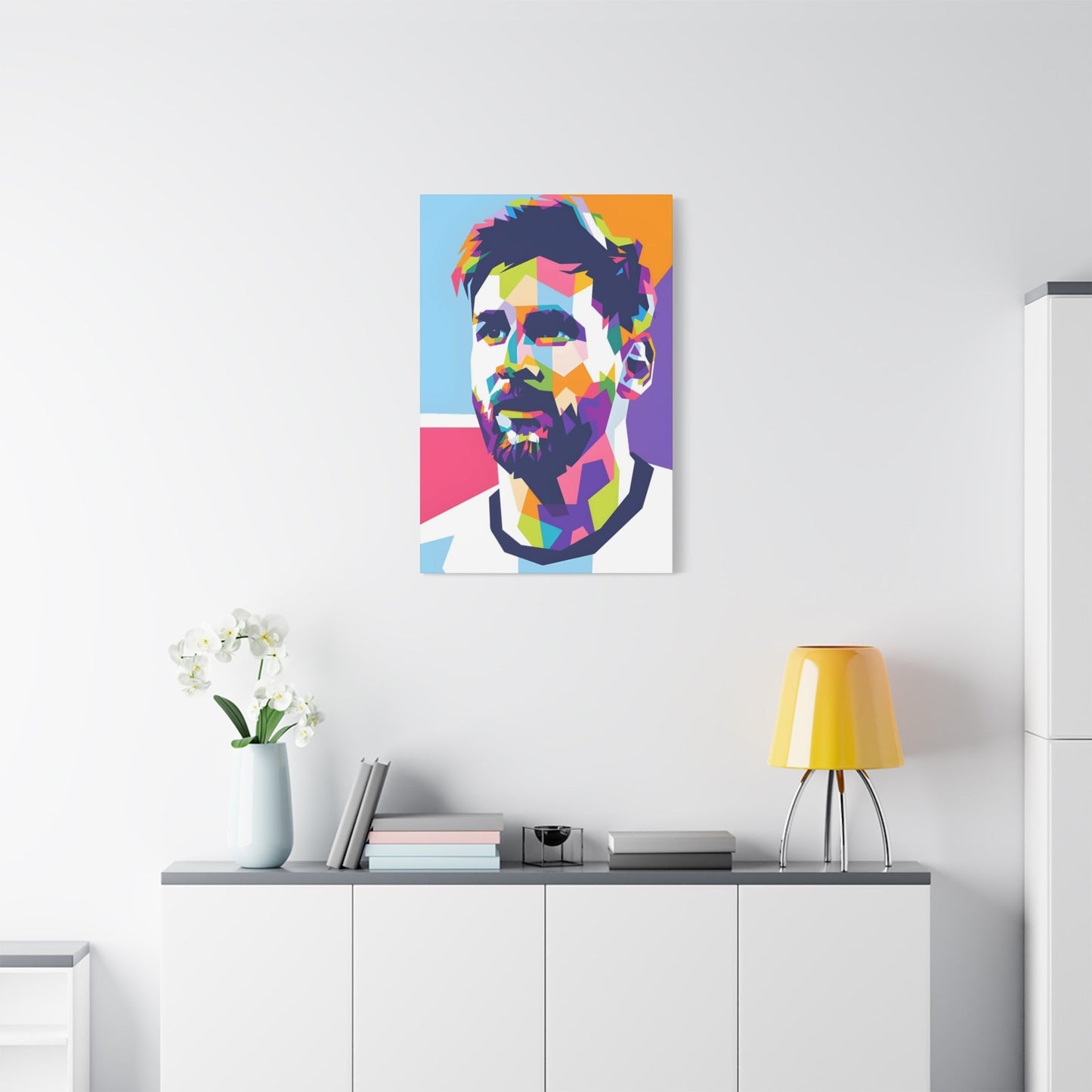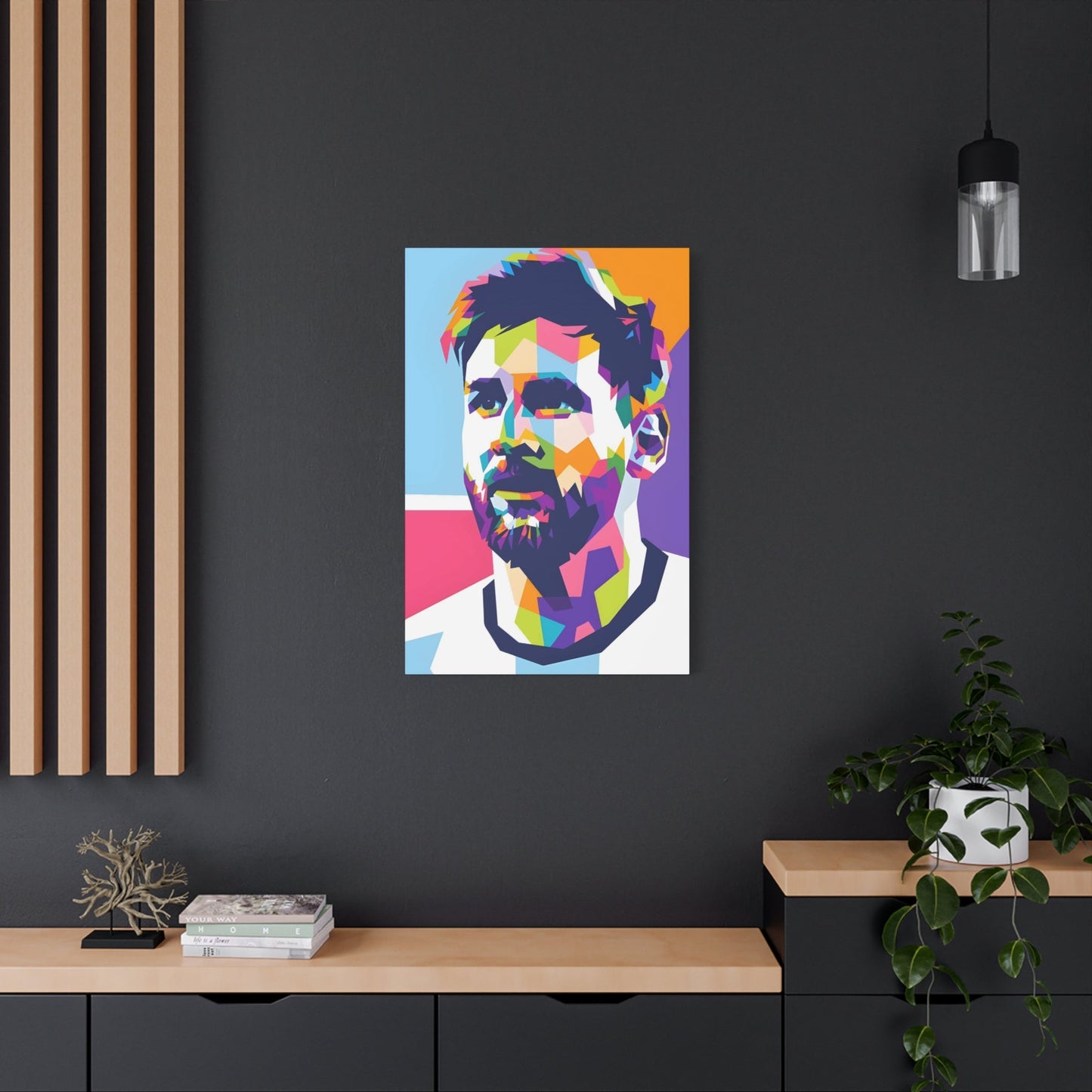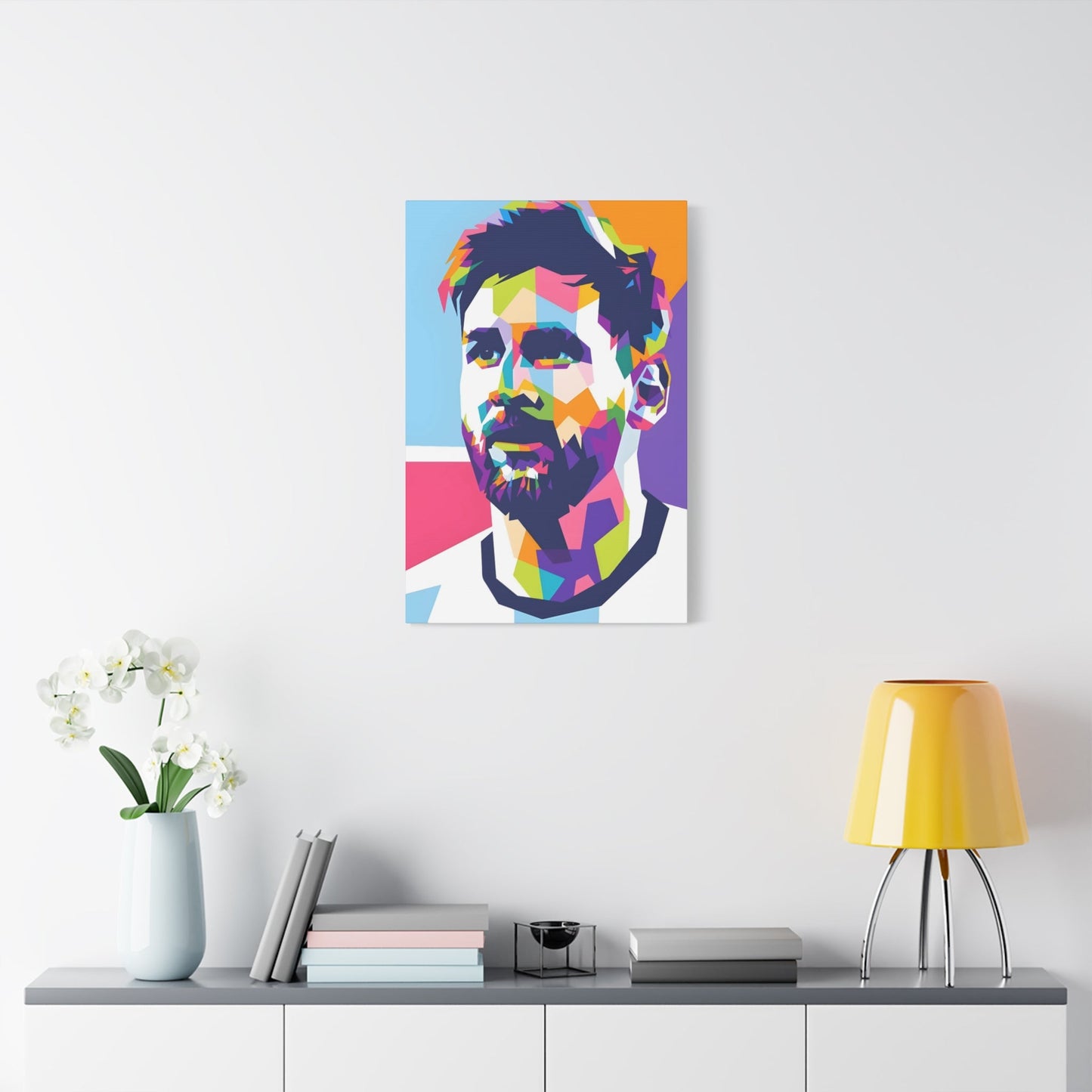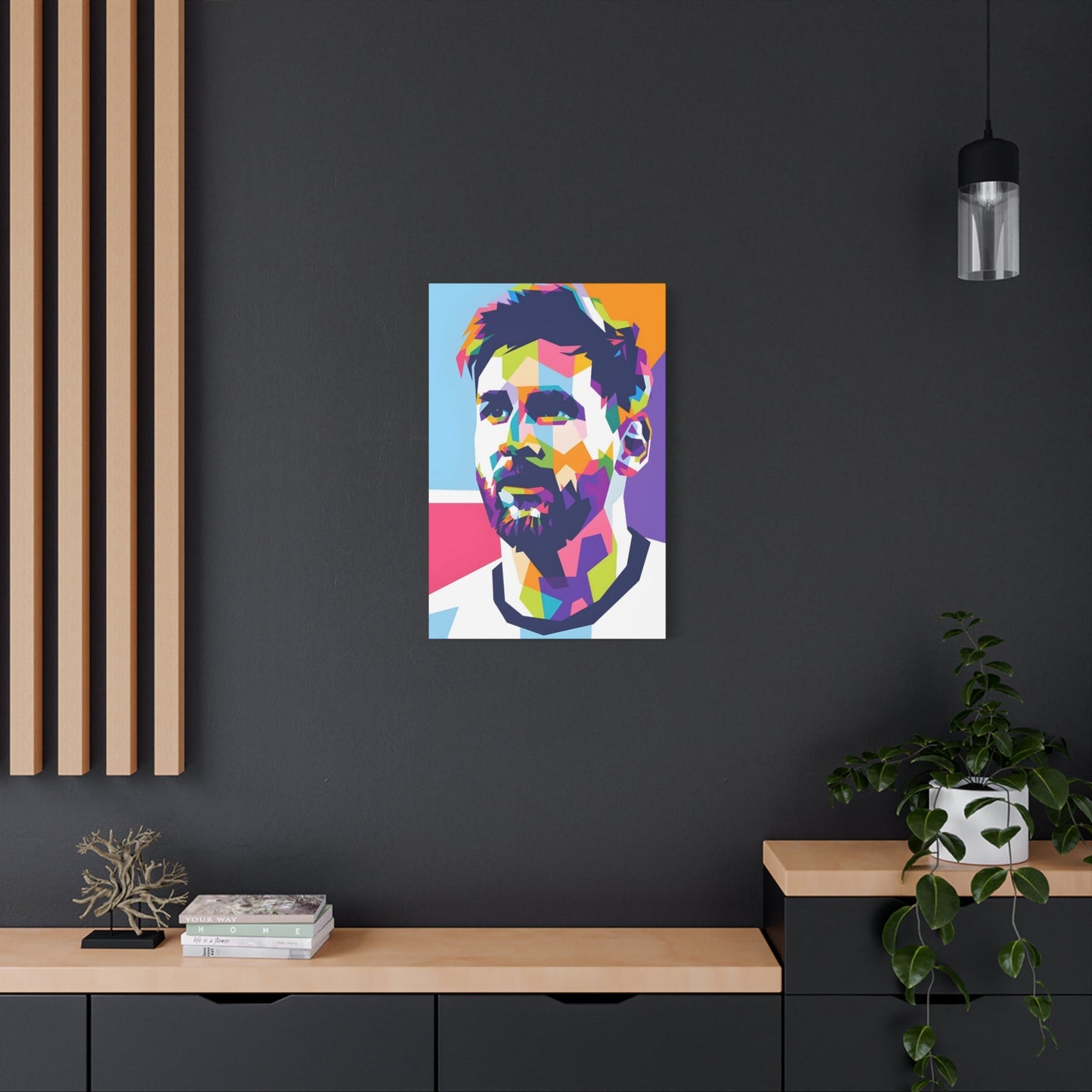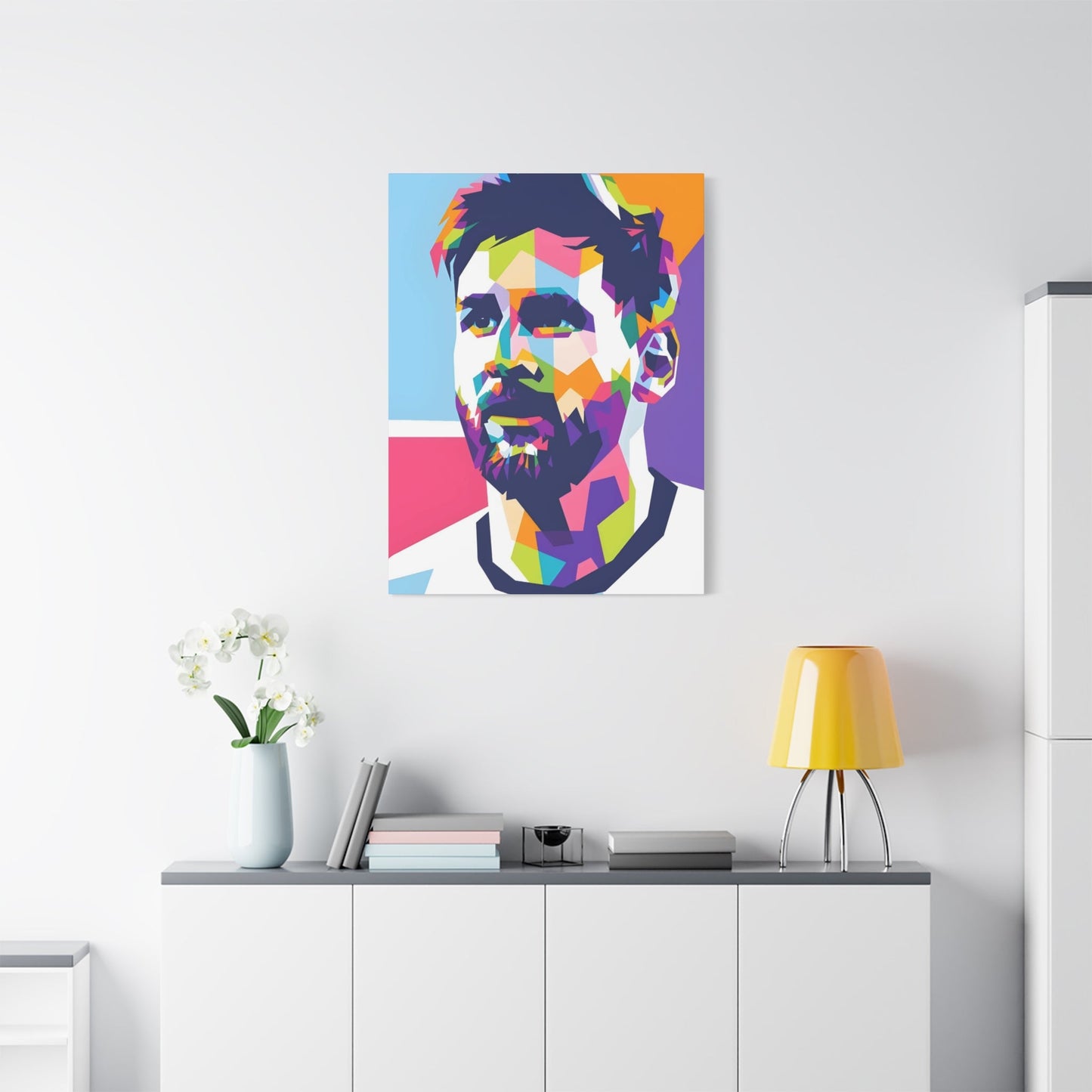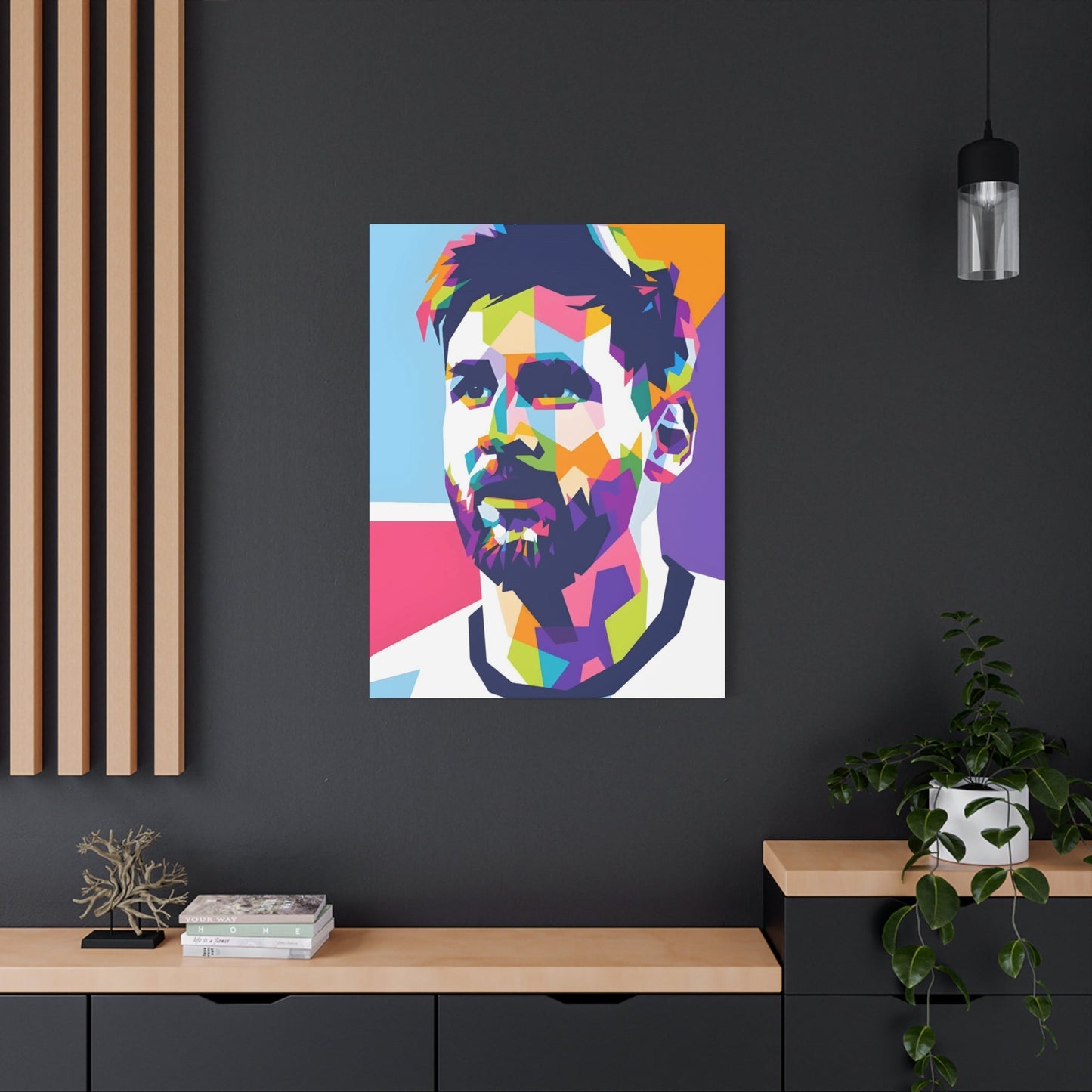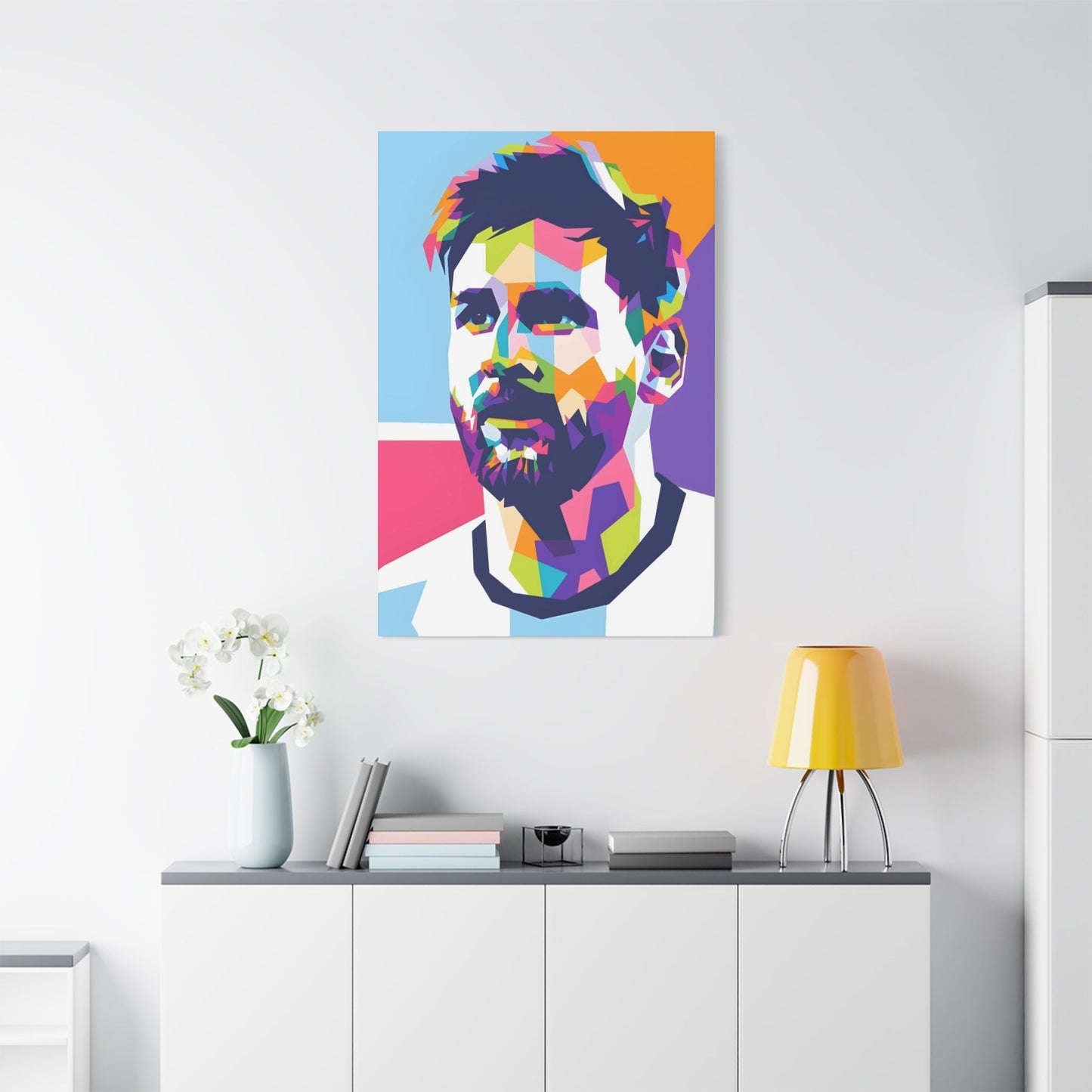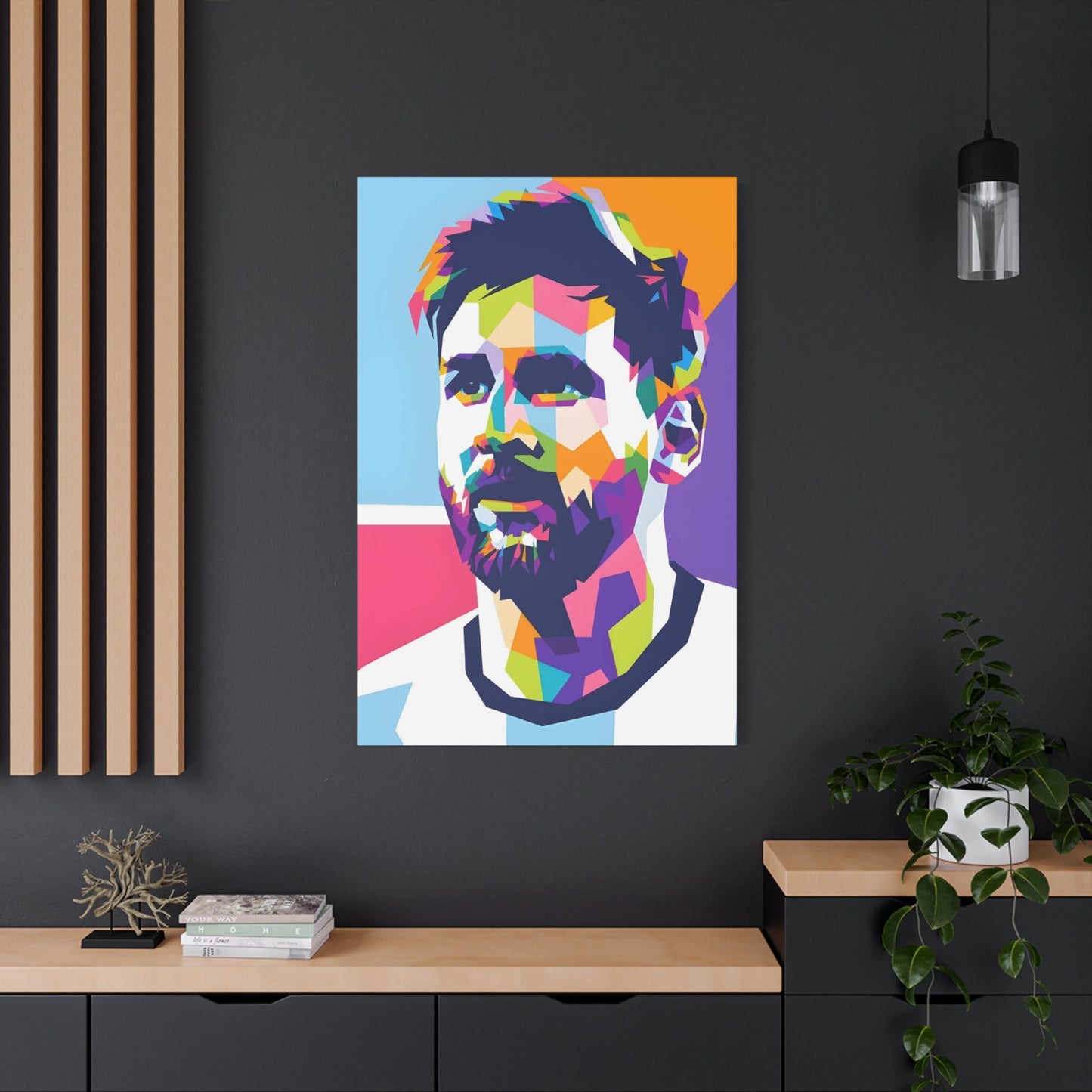Artistic Harmony: Creating Dynamic Interior Spaces with Abstract and Figurative Wall Art
The world of interior design has witnessed a revolutionary shift toward embracing artistic diversity within living spaces. Gone are the days when homeowners felt compelled to choose between purely abstract or strictly figurative artwork. Today's most compelling interiors showcase the dynamic interplay between these two artistic approaches, creating spaces that are both visually stimulating and emotionally resonant. This harmonious blend of abstract expressionism and figurative representation offers unlimited possibilities for creating personalized, sophisticated environments that reflect the complexity and richness of modern life.
The marriage of abstract and figurative art forms represents more than just a design trend; it embodies a philosophical approach to living that celebrates both the emotional freedom of abstract expression and the narrative power of representational art. When skillfully combined, these contrasting styles create a visual dialogue that engages viewers on multiple levels, encouraging both intellectual contemplation and emotional response. This artistic synergy transforms ordinary walls into captivating galleries that tell stories, evoke moods, and inspire daily living.
Contemporary interior designers and art enthusiasts have discovered that the strategic combination of abstract and figurative elements can solve numerous design challenges while creating spaces that feel both cohesive and dynamically interesting. Whether working with a minimalist modern aesthetic or a more eclectic traditional approach, the thoughtful integration of mixed art styles offers solutions for creating depth, adding personality, and establishing focal points throughout the home.
Mastering the Art of Style Integration in Interior Design
The successful integration of abstract and figurative art styles requires a deep understanding of how different artistic elements interact within a space. This process involves more than simply hanging diverse artworks on the same wall; it demands careful consideration of color relationships, compositional balance, thematic connections, and spatial dynamics. The goal is to create a cohesive visual narrative that feels intentional and harmonious rather than random or chaotic.
Professional interior designers often begin the integration process by identifying common elements that can serve as bridges between abstract and figurative pieces. These connecting factors might include shared color palettes, similar brushwork techniques, complementary themes, or matching emotional tones. For example, an abstract piece dominated by warm earth tones can beautifully complement a figurative landscape that incorporates similar colors, even though their stylistic approaches differ dramatically.
The scale and proportion of artworks play crucial roles in successful style integration. Large abstract pieces can serve as dramatic backdrops for smaller figurative works, while clusters of medium-sized pieces from both styles can create engaging gallery walls that maintain visual balance. The key lies in understanding how the human eye moves through a space and ensuring that the placement of mixed artworks guides viewers through a logical and pleasing visual journey.
Texture and medium considerations also significantly impact the success of style integration. Mixing oil paintings with watercolors, incorporating photography alongside traditional paintings, or combining digital prints with hand-drawn illustrations can add layers of visual interest while maintaining stylistic harmony. The varied textures and finishes create tactile appeal that enhances the overall sensory experience of the space.
Lighting plays an equally important role in showcasing mixed art styles effectively. Different types of artwork may require varying lighting approaches to highlight their unique characteristics. Abstract pieces might benefit from dramatic spotlighting that emphasizes texture and color depth, while figurative works may require more even illumination to showcase detail and narrative elements. Professional-grade picture lighting systems allow for individualized illumination that can be adjusted to highlight specific pieces while maintaining overall ambient lighting in the room.
The psychological impact of mixed art styles extends beyond mere aesthetics, influencing how occupants feel and behave within the space. Abstract elements can stimulate creativity and encourage contemplation, while figurative components provide grounding through recognizable imagery and narrative content. This combination creates environments that are both inspiring and comfortable, sophisticated yet approachable.
Decorative Strategies for Mixed Wall Art Integration
Developing effective decorative strategies for mixed wall art requires careful planning and a systematic approach to artwork selection, placement, and styling. The most successful mixed art installations begin with a clear vision of the desired atmosphere and functional requirements of the space. This foundational understanding guides every subsequent decision, from individual piece selection to final accessory placement.
Color coordination serves as perhaps the most important unifying element in mixed art displays. While the artistic styles may vary dramatically, maintaining some consistency in color relationships helps create visual cohesion. This doesn't mean every piece must share identical colors, but rather that the overall color story should feel intentional and harmonious. Professional designers often work with limited color palettes that allow for both abstract and figurative pieces to coexist naturally within the established scheme.
The concept of visual weight distribution becomes crucial when working with diverse art styles. Abstract pieces often carry significant visual weight through bold colors, dramatic compositions, or large scale, while figurative works might achieve similar impact through detailed imagery or emotional content. Successful mixed displays balance these different types of visual weight to prevent any single area from becoming overwhelming or neglected.
Layering techniques offer sophisticated solutions for displaying mixed art styles within limited wall space. This approach involves creating depth through strategic overlapping, varied heights, and multiple hanging systems. Floating shelves can display smaller pieces at different depths, while larger works serve as anchor points for more complex arrangements. This three-dimensional approach to wall decoration creates museum-quality displays that maximize both visual impact and available space.
The rhythm and flow of mixed art arrangements require careful consideration of spacing, alignment, and visual pathways. Professional designers use mathematical principles such as the golden ratio and rule of thirds to create pleasing proportional relationships between pieces. However, successful mixed art displays also benefit from intentional variations in these patterns, creating visual interest through carefully planned irregularities.
Seasonal rotation strategies allow homeowners to refresh their mixed art displays throughout the year while maintaining the established design framework. This approach involves selecting a core collection of pieces that remain in place year-round, supplemented by rotating seasonal additions that reflect changing moods, colors, or themes. This system keeps the space feeling fresh and dynamic while preserving the investment in primary artwork.
The integration of sculptural elements alongside two-dimensional artworks adds another layer of complexity and interest to mixed art displays. Three-dimensional pieces can serve as transitional elements between different wall sections or as standalone focal points that complement the surrounding artwork. These sculptural additions should be carefully chosen to enhance rather than compete with the existing art collection.
Creating Powerful Statement Spaces Through Art Combination
Statement spaces represent the pinnacle of mixed art integration, where abstract and figurative elements combine to create rooms that leave lasting impressions on visitors while providing daily inspiration for occupants. These spaces go beyond simple decoration to become immersive environments that reflect personal style, cultural interests, and artistic appreciation. The creation of such spaces requires bold vision, careful execution, and attention to both dramatic impact and long-term livability.
The foundation of any successful statement space lies in identifying and emphasizing a central focal point that anchors the entire room's artistic narrative. This focal point might be a large abstract painting, a striking figurative sculpture, or even an architecturally interesting wall that serves as a canvas for multiple smaller pieces. Once established, this anchor point influences all other artistic and decorative decisions throughout the space.
Scale manipulation becomes a powerful tool in statement space creation. Oversized abstract pieces can dwarf human scale to create feelings of awe and contemplation, while intimate figurative works draw viewers into closer examination and emotional connection. The interplay between these different scales creates dynamic tension that keeps spaces visually engaging from multiple viewing distances.
Color psychology plays an amplified role in statement spaces, where the emotional impact of artistic choices is magnified by the overall environment. Bold abstract pieces might introduce energizing colors that stimulate conversation and creativity, while figurative elements provide grounding through more naturalistic color relationships. The successful balance of these color influences creates spaces that feel both exciting and comfortable.
Lighting design becomes increasingly sophisticated in statement spaces, often incorporating multiple layers and types of illumination to showcase different artworks effectively. Track lighting systems allow for flexible highlighting of individual pieces, while ambient lighting maintains overall room functionality. Specialty lighting such as color-changing LED systems can even alter the mood and appearance of artworks throughout different times of day or seasons.
The curation process for statement spaces requires more rigorous selection criteria than typical room decoration. Each piece must contribute meaningfully to the overall artistic narrative while maintaining individual merit. This selective approach often results in fewer but higher-quality pieces that create greater impact than larger collections of lesser works.
Architectural integration becomes crucial in statement spaces, where artwork and built environment work together seamlessly. Custom framing, built-in display systems, and even structural modifications might be necessary to achieve the desired effect. These integrated approaches create permanent installations that feel like natural extensions of the architectural space rather than applied decoration.
The maintenance and preservation of statement spaces require ongoing attention to protect valuable artworks while maintaining their visual impact. Professional conservation techniques, climate control systems, and security measures become important considerations in spaces where significant artistic investments are displayed.
Contemporary Home Design and Mixed Art Integration
Modern home design has evolved to embrace the complexity and richness that mixed art styles bring to residential spaces. Contemporary architecture, with its emphasis on open floor plans, large windows, and clean lines, provides an ideal backdrop for showcasing the dynamic interplay between abstract and figurative artwork. The neutral color palettes and simplified forms typical of modern design allow artwork to take center stage while providing sophisticated contrast to the built environment.
The integration of technology in contemporary homes opens new possibilities for mixed art display and appreciation. Digital art systems can rotate between different abstract and figurative collections, while smart lighting systems automatically adjust to highlight specific pieces throughout the day. These technological enhancements allow for more dynamic and interactive relationships between residents and their art collections.
Open concept living presents both opportunities and challenges for mixed art integration. The visual connectivity between different functional areas requires careful coordination of artistic elements to maintain coherence throughout the space. However, this openness also allows for grand artistic gestures that can be appreciated from multiple vantage points, creating dramatic impact impossible in traditional compartmentalized floor plans.
Contemporary furniture design, with its emphasis on clean lines and neutral colors, provides an excellent foundation for mixed art displays. The simplicity of modern furnishings allows artwork to command attention without competing for visual dominance. This relationship between furniture and art creates sophisticated environments where each element enhances the others.
The outdoor living trend in contemporary design extends mixed art possibilities beyond interior walls. Weather-resistant abstract sculptures can complement figurative garden elements, while covered outdoor spaces allow for the display of traditional artworks in semi-exterior environments. This indoor-outdoor integration creates seamless artistic experiences that connect residents with both cultural and natural beauty.
Sustainability considerations increasingly influence contemporary mixed art choices, with many homeowners seeking pieces created from environmentally responsible materials or by artists committed to sustainable practices. This ethical dimension adds another layer of meaning to mixed art collections while aligning with broader contemporary values.
The flexibility requirements of modern living influence mixed art installation strategies. Modular display systems, lightweight mounting hardware, and easily changeable arrangements accommodate the mobile lifestyles of contemporary residents while maintaining sophisticated artistic presentations.
Achieving Design Balance in Mixed Art Displays
The achievement of perfect balance in mixed art displays represents one of the most challenging yet rewarding aspects of interior design. This balance encompasses not only visual weight and proportion but also emotional resonance, thematic coherence, and functional integration within the living space. Successful balance creates environments that feel both dynamic and peaceful, stimulating yet comfortable.
Visual balance begins with understanding how different artistic elements interact within the viewer's field of vision. Abstract pieces often carry significant visual weight through bold colors, dramatic compositions, or large scale, while figurative works might achieve similar impact through detailed imagery, emotional content, or historical significance. The skilled designer learns to recognize these different types of visual weight and distribute them effectively throughout the space.
Symmetrical balance offers one approach to mixed art arrangement, where abstract and figurative pieces are distributed evenly on either side of a central axis. This formal approach works particularly well in traditional or classical interior settings where order and harmony are primary concerns. However, even symmetrical arrangements benefit from subtle variations that prevent the display from feeling rigid or sterile.
Asymmetrical balance provides more dynamic and contemporary solutions for mixed art displays. This approach relies on the careful distribution of visual weight across the composition without requiring mirror-image placement. A large abstract piece on one side of a wall might be balanced by several smaller figurative works on the other side, creating visual equilibrium through careful proportional relationships.
Color balance requires particular attention in mixed art displays, where different artistic styles may employ vastly different color approaches. Abstract pieces might feature bold, saturated colors while figurative works use more naturalistic palettes. The successful integration of these different color vocabularies requires understanding how colors interact across stylistic boundaries and using transitional elements to bridge potential gaps.
Textural balance adds another dimension to mixed art considerations. Smooth photographic prints might be balanced by heavily textured oil paintings, while delicate watercolors could provide counterpoint to bold acrylic abstractions. These textural relationships contribute to the overall sensory experience of the space while providing visual interest through variety.
Thematic balance ensures that the intellectual and emotional content of mixed art displays feels coherent despite stylistic diversity. This might involve selecting pieces that share common subjects, moods, or cultural references, even when their artistic approaches differ dramatically. The goal is to create spaces that tell coherent stories while celebrating artistic diversity.
Advanced Canvas Art Integration Techniques
The integration of canvas artworks from different stylistic traditions requires sophisticated understanding of how paintings interact within shared spaces. Canvas art, with its rich textures, varied brushwork, and diverse color applications, offers unique opportunities for creating compelling mixed displays that showcase the best of both abstract and figurative traditions. Advanced integration techniques move beyond simple hanging arrangements to create immersive artistic environments.
Grouping strategies for canvas art integration involve more than simply arranging pieces by size or subject matter. Professional designers consider factors such as brushwork compatibility, paint thickness variation, and surface texture relationships when creating gallery wall arrangements. Abstract canvases with heavy impasto techniques might be grouped with figurative works that share similar paint application methods, creating visual connections through artistic technique rather than subject matter.
Color temperature relationships become particularly important when working with oil and acrylic canvases from different periods or traditions. Abstract expressionist works often feature bold warm colors that can overwhelm more subtle figurative pieces unless carefully balanced. Advanced integration techniques involve using transitional pieces that bridge these temperature differences or employing strategic lighting to modify how colors appear within the display.
Frame selection and treatment play crucial roles in advanced canvas integration. While matching frames can unify diverse artworks, varied framing can also be used strategically to emphasize the unique character of each piece while maintaining overall coherence. Contemporary floating frames work particularly well for mixed displays, providing clean presentations that don't favor any particular artistic style.
Layering techniques allow for sophisticated three-dimensional arrangements that maximize visual impact within limited wall space. Floating shelves can display smaller canvases at varying depths, while larger works serve as backdrops for more complex arrangements. This approach creates museum-quality displays that invite closer examination of individual pieces while maintaining overall visual coherence.
The consideration of viewing angles becomes increasingly important in advanced canvas integration. Different types of artwork may be optimally viewed from different distances or angles, requiring strategic placement that accommodates these varied viewing requirements. Abstract pieces might benefit from distant viewing that allows their overall impact to register, while detailed figurative works invite closer examination.
Conservation considerations influence advanced integration strategies, particularly when displaying valuable or historically significant canvases. Factors such as UV exposure, humidity control, and temperature stability must be balanced with aesthetic goals to ensure long-term preservation of the art collection.
Professional installation techniques ensure that mixed canvas displays are both secure and properly presented. This might involve specialized hanging systems, custom mounting hardware, or even structural reinforcement to accommodate the weight and size of large canvas works.
Interior Design Psychology and Mixed Art Impact
The psychological impact of mixed art environments extends far beyond simple aesthetic appreciation, influencing mood, behavior, productivity, and overall well-being of space occupants. Understanding these psychological dimensions allows for more intentional and effective integration of abstract and figurative elements within residential and commercial environments. The science of environmental psychology provides valuable insights into how mixed art displays can be optimized for specific psychological outcomes.
Cognitive stimulation represents one of the primary psychological benefits of mixed art environments. The visual complexity created by combining different artistic styles keeps the mind engaged and alert, preventing the habituation that can occur with more monotonous decorative schemes. Research in environmental psychology suggests that moderate levels of visual complexity promote creativity and problem-solving abilities while preventing cognitive fatigue.
Emotional regulation benefits from the careful balance of abstract and figurative elements within interior spaces. Abstract art can provide emotional release and encourage introspection, while figurative works offer grounding through recognizable imagery and narrative content. This combination creates environments that support both emotional expression and psychological stability.
Stress reduction occurs when mixed art environments are properly designed to provide visual interest without overwhelming complexity. The key lies in achieving appropriate balance between stimulation and tranquility, allowing occupants to engage with artwork when desired while maintaining overall environmental calm. Natural color palettes and organic forms in both abstract and figurative pieces can enhance these stress-reducing effects.
Social interaction patterns are influenced by the presence and arrangement of mixed art displays. Artwork provides natural conversation starters and shared focal points that facilitate social engagement. The combination of abstract and figurative pieces offers multiple entry points for discussion, accommodating different personality types and cultural backgrounds within social groups.
Personal identity expression becomes more nuanced and sophisticated when homeowners embrace mixed art approaches. Rather than limiting themselves to single artistic traditions, residents can create environments that reflect the full complexity of their personalities, interests, and cultural connections. This comprehensive self-expression contributes to stronger sense of place and personal satisfaction with living environments.
Productivity and focus can be enhanced through strategic placement of mixed art elements within work and study areas. Abstract pieces might stimulate creative thinking during brainstorming sessions, while figurative works provide mental rest during intensive cognitive tasks. The variety inherent in mixed displays prevents visual boredom that can undermine sustained attention.
Cultural connectedness expands when homes showcase artistic traditions from multiple backgrounds and time periods. This exposure to diverse artistic expressions broadens residents' cultural awareness while creating more inclusive and welcoming environments for guests from varied backgrounds.
Mixed Art Style Applications Across Room Types
The application of mixed art principles varies significantly across different room types, with each space presenting unique opportunities and challenges for integrating abstract and figurative elements. Understanding these space-specific considerations allows for more effective and appropriate artistic choices that enhance rather than conflict with functional requirements. Professional interior designers develop specialized strategies for each room type while maintaining overall coherence throughout the home.
Living rooms serve as primary social spaces where mixed art can create welcoming environments that facilitate conversation and relaxation. Large abstract pieces work well as focal points above seating areas, while smaller figurative works can be grouped on side walls to provide points of interest throughout the space. The key is creating arrangements that look intentional from multiple seating positions while avoiding visual competition with television screens or architectural features.
Dining rooms benefit from mixed art displays that enhance the dining experience without overwhelming conversation or food presentation. Abstract pieces with warm color palettes can stimulate appetite and create convivial atmospheres, while figurative works featuring food, landscapes, or cultural scenes can provide conversational focal points. Scale becomes particularly important in dining rooms, where artwork must complement rather than compete with table settings and lighting fixtures.
Bedrooms require more careful consideration of psychological impact, as artwork in these spaces influences rest and intimacy. Softer abstract pieces in calming colors can promote relaxation, while personally meaningful figurative works create emotional connection and comfort. The placement of mixed art in bedrooms should consider viewing angles from the bed while avoiding overstimulating arrangements that might interfere with sleep.
Home offices and study spaces can benefit significantly from mixed art applications that support productivity while providing visual relief from work-focused activities. Abstract pieces can stimulate creativity during brainstorming, while figurative works depicting inspiring subjects can provide motivation during challenging tasks. The arrangement should avoid direct competition with computer screens while providing options for visual breaks during intensive work periods.
Kitchen spaces present unique challenges for mixed art integration due to concerns about humidity, temperature fluctuation, and food preparation activities. However, carefully chosen pieces can enhance the social aspects of cooking and dining while adding personality to functional spaces. Abstract pieces with food-related color palettes work well with figurative works depicting culinary subjects or cultural food traditions.
Bathroom applications of mixed art require careful selection of pieces that can withstand humidity while maintaining appropriateness for private spaces. Smaller scale works often function better in these environments, with abstract pieces providing visual interest while figurative works add personality without overwhelming the space.
Hallways and transitional spaces offer excellent opportunities for creating gallery-style mixed art displays that guide movement through the home while providing continuous visual interest. These spaces can accommodate more experimental arrangements since viewing time is typically brief, allowing for bolder combinations that might overwhelm other room types.
Advanced Color Theory in Mixed Art Integration
The application of advanced color theory principles becomes crucial when successfully integrating abstract and figurative artworks within shared environments. While both artistic styles may use color effectively within their individual contexts, combining them requires sophisticated understanding of how different color approaches interact and influence overall spatial perception. Master colorists in interior design develop nuanced strategies for creating harmony while preserving the unique character of each artistic tradition.
Color temperature relationships form the foundation of successful mixed art color integration. Abstract expressionist works often feature bold temperature contrasts that create dramatic visual impact, while figurative pieces typically employ more naturalistic temperature relationships. The challenge lies in bridging these different approaches without diminishing the impact of either style. Professional designers often use transitional pieces that incorporate both warm and cool elements to create visual continuity across stylistic boundaries.
Saturation management requires careful attention when combining artistic styles that may employ vastly different approaches to color intensity. High-saturation abstract pieces can easily overwhelm more subtle figurative works unless carefully balanced through strategic placement, lighting, or the introduction of neutral elements that provide visual rest. Advanced practitioners learn to create rhythmic patterns of saturation that guide the viewer's eye through complex mixed displays.
Chromatic progression techniques allow for sophisticated color journeys that connect diverse artworks through carefully planned color relationships. This might involve selecting pieces that share key colors while expressing them differently, or creating gradual transitions from one color family to another across multiple works. These progressions create underlying structure that unifies mixed displays while celebrating individual artistic achievement.
Color psychology considerations become more complex in mixed art environments where different pieces may evoke contrasting emotional responses through their color choices. The goal is to create overall emotional coherence while preserving the individual character of each work. This might require balancing energizing colors in abstract pieces with calming colors in figurative works, or finding common emotional ground through shared color families.
Cultural color associations add another layer of complexity to mixed art integration, particularly when combining works from different artistic traditions or cultural backgrounds. Colors that appear harmonious in one cultural context might clash in another, requiring sensitive navigation of these differences. Advanced practitioners develop cross-cultural color literacy that allows for respectful integration of diverse artistic traditions.
Lighting interaction with mixed color palettes requires sophisticated technical understanding of how different light sources affect various pigments and color relationships. Natural daylight might enhance certain abstract pieces while washing out more delicate figurative works. Advanced integration strategies often involve layered lighting systems that can be adjusted to optimize different artworks throughout the day.
Seasonal color considerations allow for dynamic relationships between mixed art collections and changing environmental conditions. Colors that work well together during bright summer months might require adjustment during darker winter periods. Professional designers often plan for these seasonal variations by selecting pieces that maintain their relationships across different lighting conditions.
Textural Considerations in Mixed Media Displays
The integration of varied textures within mixed art displays adds crucial dimensional interest that enhances both visual appeal and tactile engagement with artistic collections. Texture serves as a unifying element that can bridge stylistic differences while providing sensory richness that elevates the overall aesthetic experience. Advanced understanding of textural relationships allows for sophisticated combinations that maximize the unique qualities of both abstract and figurative works.
Surface texture variations between different artistic media require careful consideration during selection and arrangement processes. Oil paintings with heavy impasto techniques create dramatically different textural experiences than smooth photographic prints or delicate watercolor washes. The successful integration of these varied textures requires understanding how light interacts with different surfaces and how viewing distance affects textural perception.
Brushwork patterns provide subtle but important textural connections between abstract and figurative pieces. Works that share similar brush techniques or paint application methods can feel naturally connected even when their subject matter or color palettes differ significantly. Professional curators often look for these technical similarities as foundation elements for mixed displays.
Frame and mounting choices significantly impact the textural relationships within mixed art arrangements. Heavy, ornate frames can add textural weight that competes with artwork, while clean, minimal frames allow the natural textures of the pieces to take prominence. Advanced practitioners often vary framing approaches strategically to emphasize or de-emphasize textural elements as needed for overall balance.
Lighting angle considerations become crucial when displaying artworks with significant textural variation. Grazing light can emphasize texture in abstract pieces with heavy paint application, while even illumination might be preferred for detailed figurative works. Multiple lighting angles or adjustable systems allow for optimization of textural display throughout different viewing conditions.
Material authenticity issues arise when mixing original artworks with high-quality reproductions in textural environments. While digital prints can achieve remarkable color accuracy, they typically lack the dimensional texture of original paintings. Advanced integration strategies might separate these different media types or use transitional elements to minimize textural disparities.
Maintenance and preservation considerations for mixed textural displays require understanding how different materials respond to environmental conditions. Oil paintings might require different humidity levels than works on paper, while textured surfaces may accumulate dust differently than smooth finishes. Professional conservation practices ensure long-term preservation of diverse textural collections.
Scale relationships between textural elements affect how texture reads within the overall display. Large-scale abstract pieces with heavy texture can dominate smaller, smoother figurative works unless carefully balanced through strategic placement or intermediate textural elements. Advanced practitioners develop sensitivity to these scale-texture interactions.
Architectural Integration Strategies
The successful integration of mixed art collections with architectural elements requires sophisticated understanding of how artwork relates to structural features, spatial proportions, and design intentions of the built environment. Architecture provides both opportunities and constraints for mixed art display, with skilled integration enhancing both the artwork and the architectural experience. Professional designers develop specialized strategies for different architectural styles while maintaining respect for original design intentions.
Proportion relationships between artwork and architectural elements form the foundation of successful integration strategies. Classical architectural proportions may call for formal artwork arrangements that respect traditional hierarchies, while modern architecture often accommodates more experimental mixed art approaches. Understanding these proportional systems allows for artwork placement that feels natural and intentional rather than imposed or arbitrary.
Sight line considerations become increasingly important in mixed art integration, where diverse pieces must work together across long views and transitional spaces. Architectural features such as doorways, windows, and structural elements create natural viewing frames that can be used to advantage in mixed displays. Advanced practitioners learn to use these architectural elements as compositional tools rather than obstacles to overcome.
Color relationships between artwork and architectural finishes require careful coordination to prevent visual conflicts while maintaining independence for both elements. Neutral architectural backgrounds typically provide the most flexibility for mixed art displays, while strongly colored architectural elements may require more careful artwork selection. The goal is achieving harmony without sacrificing the individual character of either architectural or artistic elements.
Lighting integration strategies must consider both architectural lighting systems and artwork-specific illumination requirements. Built-in lighting fixtures may provide excellent general illumination while requiring supplemental picture lighting for optimal artwork display. Advanced integration often involves custom lighting solutions that serve both architectural and artistic needs without compromising either function.
Storage and rotation considerations become important in architecturally integrated mixed art systems. Built-in display features might accommodate seasonal rotation of collections, while storage solutions allow for expanded collections that can be displayed in rotation. These systems support dynamic relationships between artwork and architecture over time.
Conservation integration requires balancing architectural environmental conditions with artwork preservation needs. HVAC systems, window placement, and insulation strategies all affect the long-term preservation of mixed art collections. Professional integration considers these technical requirements alongside aesthetic goals.
Security integration protects valuable mixed art collections while maintaining architectural integrity and daily functionality. Alarm systems, secure mounting hardware, and access control measures must be incorporated sensitively to avoid compromising either security or aesthetic goals.
Professional Installation and Curation Techniques
The professional installation and curation of mixed art collections requires specialized knowledge, tools, and techniques that go far beyond simple picture hanging. These advanced approaches ensure both the safety of valuable artworks and the achievement of optimal visual impact within complex mixed displays. Professional standards for mixed art installation address everything from structural considerations to fine-tuned aesthetic adjustments.
Structural assessment forms the foundation of professional mixed art installation, particularly when dealing with large or heavy pieces that might stress wall systems beyond their design capacity. Professional installers conduct thorough evaluations of wall construction, stud locations, and load-bearing capabilities before developing hanging strategies. This assessment becomes particularly important in mixed displays where varied artwork sizes and weights must be distributed safely across shared wall areas.
Precise measurement and layout techniques ensure that mixed art arrangements achieve intended proportional relationships and visual balance. Professional installers use specialized tools and mathematical principles to create layouts that appear effortless while actually representing careful calculation of spacing, alignment, and visual weight distribution. These techniques become increasingly important in complex mixed displays where small placement errors can disrupt overall harmony.
Hanging hardware selection requires understanding the specific requirements of different artwork types and sizes. Abstract pieces with heavy frames might require robust wall anchors and security hardware, while delicate figurative works need gentler hanging systems that protect both artwork and wall surfaces. Professional installers maintain extensive inventories of specialized hardware to accommodate diverse mixed collection requirements.
Height optimization considers the viewing characteristics of different artwork types when determining placement within mixed displays. Abstract pieces might benefit from installation at heights that allow their overall impact to register from standard viewing distances, while detailed figurative works might require placement that facilitates closer examination. These considerations become complex in mixed displays where multiple viewing requirements must be accommodated.
Environmental protection during installation prevents damage from construction dust, humidity changes, or accidental impact during the installation process. Professional installers use protective coverings, climate monitoring, and careful sequencing of installation activities to ensure artwork safety throughout the process. These protections become particularly important when installing valuable or historically significant pieces.
Quality control procedures ensure that mixed art installations meet professional standards for both safety and aesthetic achievement. This includes final inspections of hanging security, lighting optimization, label placement, and overall visual impact. Professional installers document their work to support ongoing maintenance and future modifications to mixed art displays.
Documentation and maintenance planning support the long-term success of mixed art installations. Professional curators maintain detailed records of artwork placement, environmental conditions, and maintenance requirements to ensure continued optimal presentation of mixed collections. This documentation proves invaluable during insurance evaluations, conservation activities, or collection modifications.
Seasonal Adaptation and Dynamic Display Systems
The development of seasonal adaptation strategies for mixed art collections allows for dynamic relationships between artwork and changing environmental conditions while maintaining year-round visual interest and relevance. These approaches recognize that static art displays may lose impact over time while seasonal variations can refresh and revitalize living spaces. Professional designers develop systematic approaches to seasonal adaptation that protect artwork investments while maximizing their ongoing impact.
Seasonal color coordination takes advantage of changing natural light conditions and seasonal color preferences to optimize mixed art displays throughout the year. Warm-toned abstract pieces might take prominence during autumn and winter months, while cooler figurative works featuring landscape or water themes could dominate spring and summer arrangements. These rotations maintain collection freshness while responding to psychological associations with seasonal change.
Storage and rotation systems support seasonal adaptation by providing organized, climate-controlled storage for artworks not currently on display. Professional-grade storage solutions protect pieces from damage while facilitating easy access for seasonal rotations. These systems often incorporate documentation and tracking tools that help maintain collection organization during frequent changes.
Lighting adaptation strategies recognize that seasonal changes in daylight quality and duration affect how mixed art collections appear throughout the year. Adjustable artificial lighting systems can compensate for these natural variations, maintaining optimal artwork presentation regardless of external conditions. Advanced systems might automatically adjust throughout the day and seasons to maintain consistent viewing conditions.
Thematic seasonal integration allows mixed art collections to reflect holiday traditions, cultural celebrations, or personal seasonal preferences without requiring complete display overhauls. Small additions of seasonally appropriate pieces can transform the character of mixed displays while maintaining core collection elements year-round. This approach balances tradition with artistic sophistication.
Climate control considerations become increasingly important in seasonal adaptation systems where frequent artwork movement might expose pieces to varying environmental conditions. Professional conservation practices ensure that seasonal rotations don't compromise artwork preservation through excessive handling or environmental exposure.
Planning and scheduling systems help coordinate seasonal adaptations with other household activities while ensuring that artwork rotations occur at optimal times. Professional curators often develop annual rotation schedules that coordinate with seasonal décor changes, holiday preparations, or major cleaning activities.
Investment protection strategies ensure that seasonal adaptation systems actually enhance rather than compromise the value of mixed art collections. Proper handling, storage, and documentation practices maintain collection integrity while supporting dynamic display approaches that maximize owner enjoyment and satisfaction.
Conclusion
Artistic harmony achieved through the combination of abstract and figurative wall art provides a powerful way to create dynamic, engaging, and visually balanced interior spaces. By blending the imaginative freedom of abstract forms with the recognizable, emotive qualities of figurative art, homeowners and designers can craft interiors that are both intellectually stimulating and emotionally resonant. Each piece contributes to a layered narrative, transforming walls into a canvas for storytelling, personal expression, and aesthetic sophistication.
The appeal of combining abstract and figurative wall art lies in its ability to balance structure and creativity. Abstract pieces invite viewers to interpret shapes, colors, and textures, sparking imagination and offering fluid, open-ended experiences. Figurative art, on the other hand, grounds spaces in recognizable forms, expressions, and narratives, creating emotional connection and relatability. Together, these approaches foster a dynamic interplay that keeps interiors visually engaging, providing rhythm, contrast, and a sense of movement that captures attention while enhancing the atmosphere of the room.
Beyond aesthetics, this harmonious combination carries symbolic and psychological benefits. Abstract forms encourage creativity, reflection, and curiosity, while figurative elements provide familiarity, storytelling, and emotional depth. Integrating both styles allows spaces to feel thoughtfully curated and multidimensional, offering residents and visitors opportunities for exploration, interpretation, and emotional engagement. Whether displayed in living rooms, offices, galleries, or private studios, such wall art creates environments that are intellectually stimulating yet comfortable, expressive yet cohesive.
From a design perspective, abstract and figurative wall art offers versatility and adaptability. Large statement pieces anchor spaces with bold presence, while smaller or layered arrangements allow for dynamic visual flow across walls. Color palettes, textures, and composition choices can harmonize with a wide range of interior styles—from modern minimalism to eclectic and contemporary spaces—ensuring that the art enhances rather than overwhelms. This approach provides designers with creative freedom while maintaining balance and cohesion throughout the room.
Ultimately, the integration of abstract and figurative wall art transcends decoration—it is a celebration of creativity, emotion, and visual storytelling. By combining these two artistic languages, interiors can achieve a unique sense of harmony, energy, and sophistication, transforming walls into expressive spaces that inspire, captivate, and reflect the personality, vision, and artistic sensibility of those who inhabit them.




















